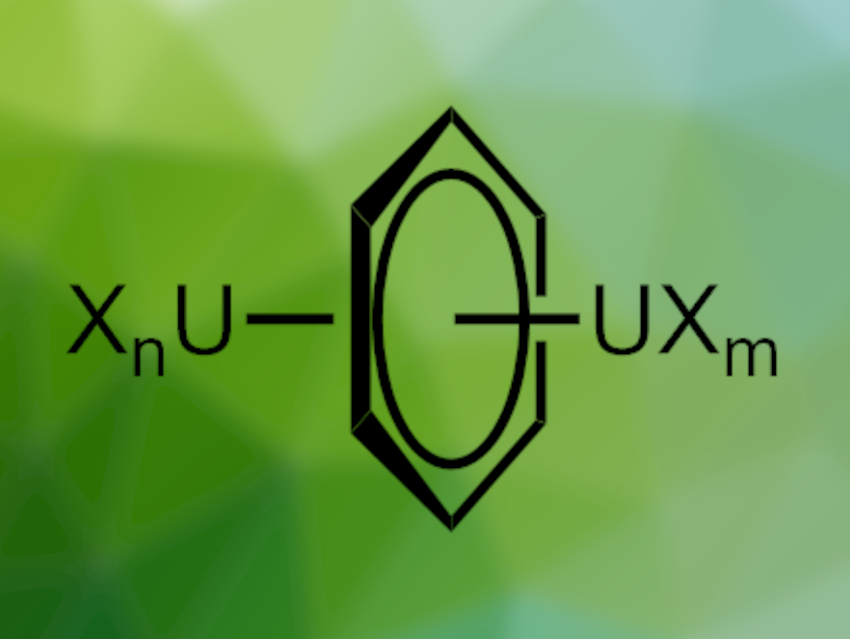Uranium(III) compounds can be strongly reducing. They can activate small molecules that are usually considered inert, such as dinitrogen. Polly L. Arnold, University of Edinburgh, UK, and colleagues have found that simple U(III) aryloxide complexes of the type UX3 can spontaneously reduce arenes to give unusual inverse arene sandwich (IAS) complexes of the type XnU(μ-C6H6)UXm (general structure pictured).
The team dissolved U(ODipp)3 in benzene to give the dimeric IAS complex {(DippO)3U(μ-C6H6)U(ODipp)2}2 and the U(IV) byproduct U(ODipp)4. If U(ODipp)3 is dissolved in an aromatic solvent containing phosphines such as PCy3, dmpm, or dmpe (Cy = cyclohexyl, dmpm = bis(dimethylphosphino)methane, dmpe = bis(dimethylphosphino)ethane), IAS complexes of the type (DippO)3U(arene)U(ODipp)2(L) are obtained, with L being the respective mono- or bidentate phosphine ligand.
Similarly, the dimeric complex {U(OBMes2)3}2 can react with benzene in the presence of PCy3 to give the IAS complex {(OBMes2)3U}2(μ–η6,η6-C6H6). Here, the phosphine acts as a catalyst and does not remain in the product. According to the researchers, the obtained uranium IAS complexes contain a doubly reduced arene, which is in line with previously reported uranium complexes.
- Instantaneous and Phosphine-Catalyzed Arene Binding and Reduction by U(III) Complexes,
Polly L. Arnold, Connor J. V. Halliday, Laura Puig-Urrea, Gary S. Nichol,
Inorg. Chem. 2021.
https://doi.org/10.1021/acs.inorgchem.1c00327




